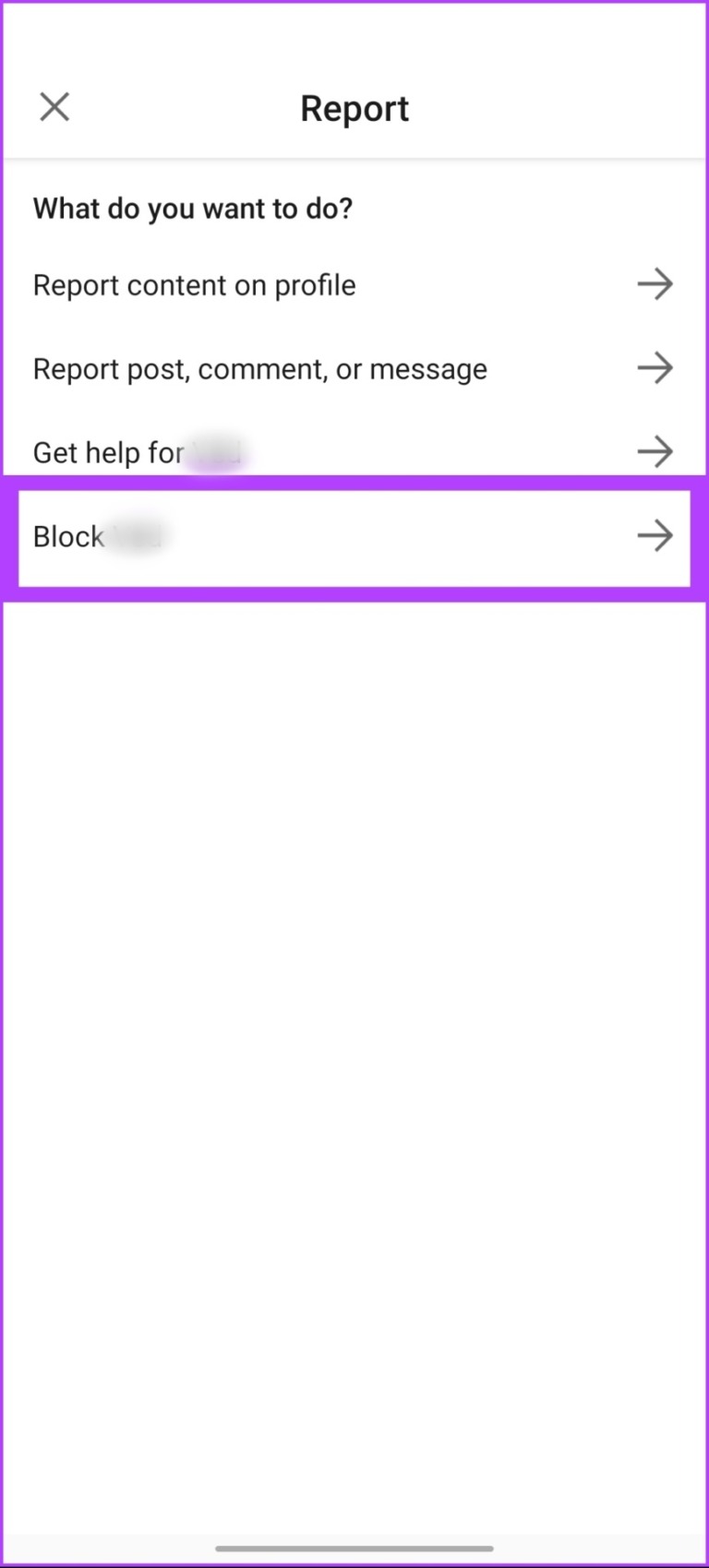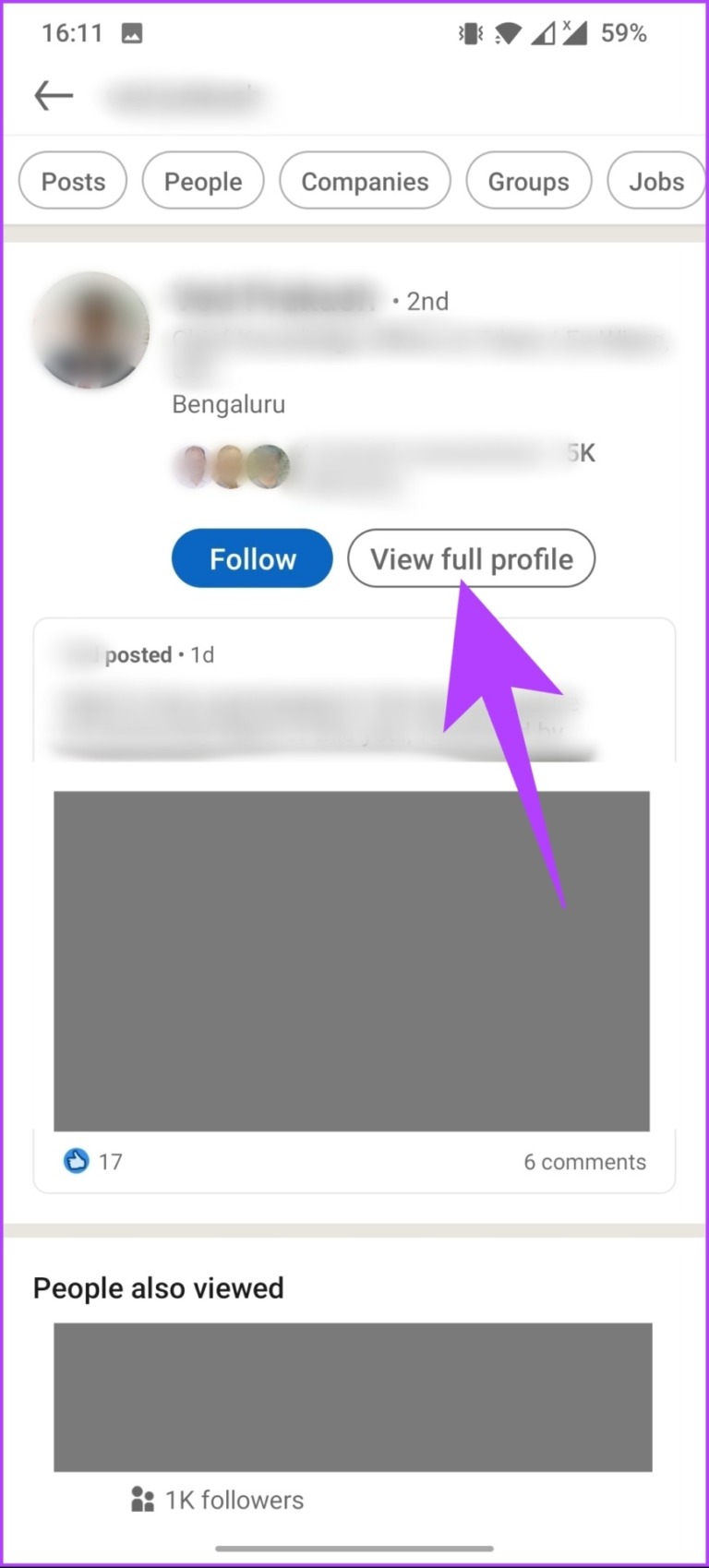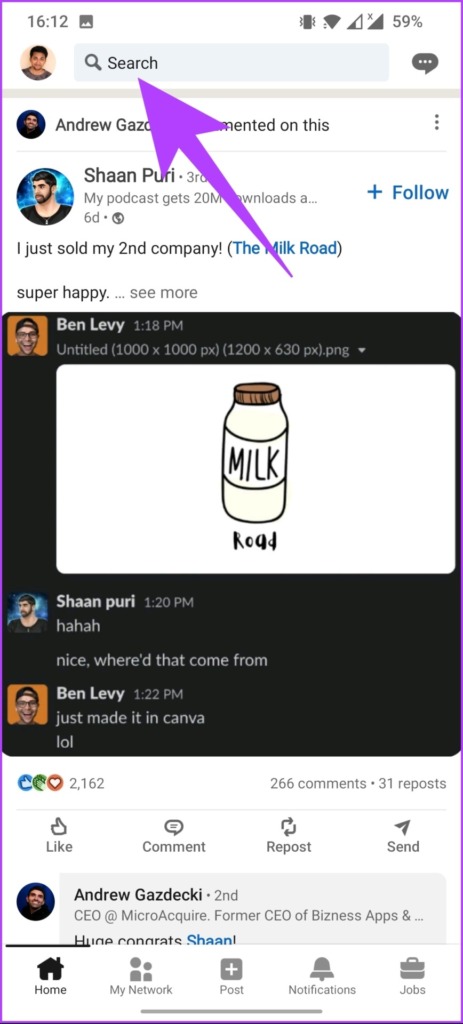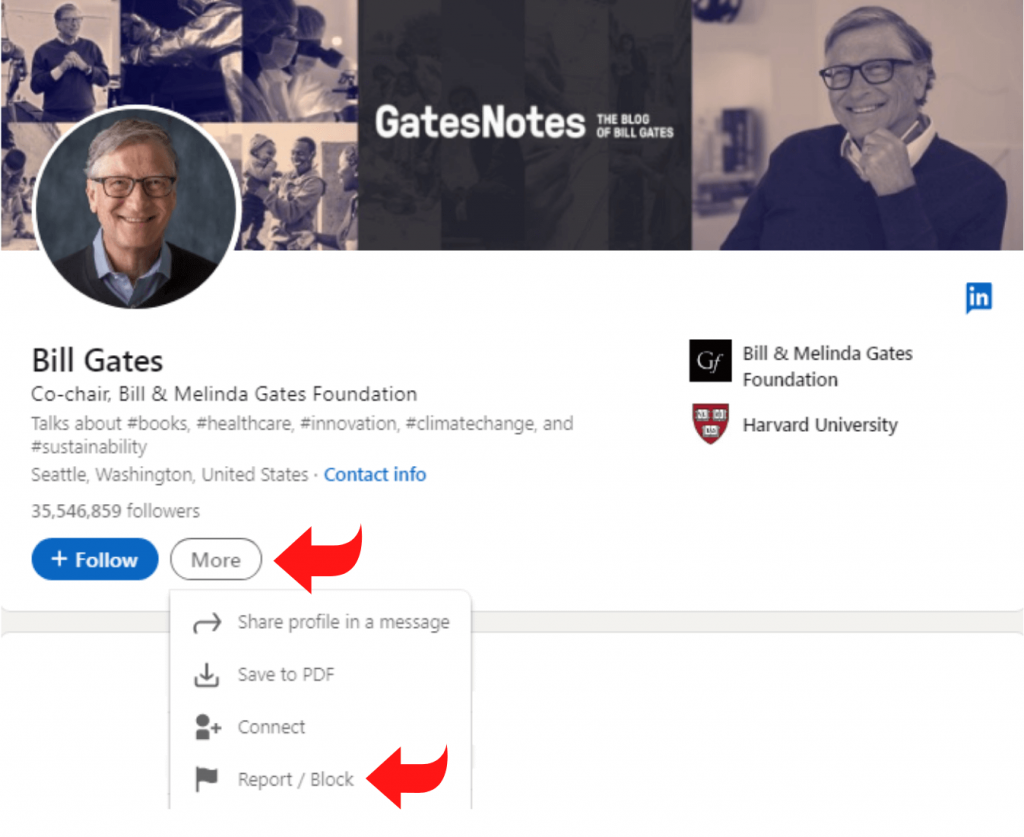LinkedIn is a professional networking platform where connections are made, opportunities are found, and relationships are built. However, just like in any social environment, not all interactions are positive. If you find yourself in a situation where you need to limit your exposure to certain individuals, blocking users on LinkedIn can be a necessary step. In this post, we’ll dive into how to effectively block someone on
Reasons to Block Someone on LinkedIn

Blocking someone on LinkedIn can feel like a big step, but it can also be a necessary measure to maintain your professional integrity and ensure a healthy networking environment. Here are some common reasons why you might consider blocking a user on LinkedIn:
- Inappropriate Messages: If someone is sending you unsolicited, spammy, or inappropriate messages, blocking them can put a stop to unwanted communication.
- Harassment or Bullying: Unfortunately, some users may engage in harassment or bullying. If you feel threatened or uncomfortable, blocking them is essential for your peace of mind.
- Unprofessional Behavior: If a connection engages in unprofessional behavior on the platform—such as commenting inappropriately on your posts or those of others—it may be time to block them.
- Conflict of Interest: Should you find yourself in a competitive industry, blocking someone who poses a conflict of interest can help protect your professional image and opportunities.
- Misinformation: If someone consistently spreads misinformation or engages in deceptive practices, distancing yourself by blocking them can help keep your feed and connections more credible.
- Unwanted Networking Attempts: Sometimes, people will relentlessly pursue connections. If someone is overly persistent and you simply aren’t interested, blocking can halt those requests.
Blocking a user on LinkedIn is permanent, meaning they won’t be able to see your profile, nor will you see theirs. However, consider this as a last resort after other options like adjusting privacy settings or simply ignoring the user have been exhausted. Remember, it’s essential to protect your professional space while maintaining a positive presence in your network.
Also Read This: Creating a CV from LinkedIn: A Quick and Easy Guide
3. Step-by-Step Guide to Blocking Users on LinkedIn

Blocking someone on LinkedIn is a straightforward process, and it can be incredibly helpful if you’re dealing with unwanted connections or inappropriate messages. Here’s a simple, step-by-step guide to help you navigate through this process:
- Go to the Profile of the User You Want to Block
- Click on the “More” Button
- Select “Report/Block”
- Choose “Block”
- Confirm Your Decision
- Done!
Start by locating the profile of the individual you wish to block. You can do this by using the search bar at the top of your LinkedIn homepage. Just type in their name, and once you find them, click on their profile.
Once you’re on their profile page, look for the “More” button, which is typically situated next to the “Message” button. Click on it to reveal a dropdown menu of options.
In the dropdown menu, you'll see the option to “Report/Block.” Click on this option to proceed to the next step.
A new window will pop up, giving you two options: “Report” or “Block.” Since you want to block the user, select the “Block” option.
You’ll be asked to confirm your decision. LinkedIn will provide a brief explanation of what blocking entails, including the fact that the person won’t be notified about the block. If you’re sure, click the “Block” button.
Congratulations! You’ve successfully blocked the user. You won’t see their content in your feed, and they won't be able to send you messages or connect with you.
And that’s it! Blocking someone on LinkedIn is a simple process that takes just a few minutes. Remember, you can always unblock someone later if you change your mind.
Also Read This: How Do I Change My Email in LinkedIn: A Complete Guide to Updating Your Email Address
4. What Happens After You Block Someone on LinkedIn

Now that you know how to block someone on LinkedIn, you might be wondering what exactly happens after you take this step. Here’s what to expect:
- You Will No Longer See Their Content: Once you block a user, all their activity, including posts, comments, and likes, will disappear from your feed. This means your LinkedIn experience will be free of any unwanted interactions with that person.
- They Can't Contact You: Blocking a user means they can no longer send you messages or request to connect. It’s like putting up a wall between you and that person, ensuring you won’t receive any unwanted communications.
- Your Profile Remains Private to Them: After blocking them, they will no longer be able to view your profile. They’ll see a placeholder that indicates that the profile is no longer available to them.
- No Notification is Sent: One of the best things about LinkedIn's blocking feature is that the person you block will not receive any notification about your action. This means you can take control of your connections without drama.
- You Can Unblock Them Anytime: If you find yourself in a situation where you want to reconnect with the blocked user, you can easily unblock them. Just go to your settings to manage your blocked users. They won’t get notified when you unblock them as well.
Overall, blocking someone on LinkedIn is a powerful tool to maintain your online professional presence without being disturbed. It's there for your peace of mind, so don't hesitate to use it whenever necessary!
Also Read This: When Is the Right Time to Update Your LinkedIn Profile with a New Job?
5. How to Unblock a User on LinkedIn

So, you’ve made the decision to unblock someone on LinkedIn. Whether it’s because of a change of heart or a need for professional networking, it’s a straightforward process! Here’s how you can do it:
- Sign in to Your LinkedIn Account: Start by logging into your LinkedIn profile. Make sure you’re using the same account where you initially blocked the user.
- Go to Your Settings: Click on the “Me” icon at the top of your LinkedIn homepage. From the dropdown menu, select “Settings & Privacy.”
- Find the Blocking Option: In the “Visibility” section, look for an option called “Blocking and Hiding.” Here, you'll find the list of users you’ve blocked.
- Unblock the User: Locate the name of the person you want to unblock. Next to their name, you’ll see the option to “Unblock.” Click on that.
- Confirm Your Choice: A confirmation message will pop up, asking if you’re sure you want to unblock this user. Click “Unblock” again to finalize the action.
And just like that, you’ve unblocked the user! However, here's something to keep in mind: once you unblock someone, you may need to send them a connection request again, as unblocking doesn’t automatically reconnect you. Additionally, if you unblock them, they will be able to see your profile again and could potentially try reaching out.
Also, be aware that LinkedIn will notify the unblocked user that they can now view your profile again, but it won’t tell them that you’ve unblocked them. This can sometimes lead to awkward situations, so it's always good to be prepared for that.
Also Read This: How to Make LinkedIn Premium Not Show: Hiding Premium Subscription Status on LinkedIn
6. Privacy Considerations When Blocking Users
Blocking someone on LinkedIn isn’t just about cutting ties; it’s also a significant decision in terms of your online privacy. Here are some key considerations you should think about:
- Profile Visibility: When you block someone, they can no longer view your profile or any of your activity on LinkedIn. This means they won't see your posts, updates, or professional achievements, which can be crucial in maintaining your privacy.
- Connections and Endorsements: If the person you block is a connection, blocking them will remove this connection. This action can impact mutual contacts and endorsements, so it’s important to weigh your options carefully.
- Notifications: As mentioned earlier, LinkedIn doesn't notify users that they’ve been blocked, but they may notice that they can’t find you on the platform. Consider how this might affect your professional relationships.
- Future Interactions: If you unblock the user later, they can once again access your profile. Think about how comfortable you are with this potential change in accessibility—especially if you plan to maintain a professional relationship in the future.
- Managing Your Network: Always review your connections and blocked users periodically. Keeping a clean and active network is essential for your professional growth, and unblocking the right connections at the right time can lead to new opportunities.
In essence, blocking someone isn’t just a technical action; it can have real implications on your networking and professional image. Always consider the broader effects before taking this step, ensuring it aligns with your career goals and personal comfort levels.
Also Read This: How to Add a Badge to Your LinkedIn Profile: A Simple Method
7. Alternatives to Blocking on LinkedIn
While blocking users on LinkedIn can be a useful tool to maintain your professional space, it’s not your only option. Sometimes, you might want to consider other ways to manage your connections without resorting to blocking. Here are some alternatives you might find helpful:
- Adjust Privacy Settings: Rather than outright blocking someone, you can adjust your privacy settings to control what others see about your profile and activities. This can limit the visibility of your updates, connections, and profile information, allowing you to engage on LinkedIn without the added pressure.
- Remove Connections: If you have a connection that you’d rather not engage with but don’t feel the need to block, simply removing them from your connections list may suffice. This way, you won’t see their posts or updates in your feed, and they won’t have access to your activity.
- Mute Updates: If it’s specific posts or updates that are problematic, consider muting their content. You won’t see their posts in your feed, but you’ll still remain connected. This can be a gentler way to manage your LinkedIn experience.
- Utilize Profile Visibility Filters: Depending on your industry or position, you might want to limit who sees your profile. You can use the visibility settings to choose who can view your profile—this is especially handy if you’re not looking for newbie recruiters or unwanted attention.
- Set Boundaries with Direct Communication: If someone is invading your LinkedIn space, consider sending a direct message to express your concerns. Remember, sometimes a simple conversation can resolve misunderstandings before taking more drastic measures.
- Report Inappropriate Behavior: If someone is harassing you or engaging in aggressive behavior, don’t hesitate to report them. LinkedIn’s team can investigate and take appropriate action without you needing to block the individual.
Each of these alternatives has its advantages, so think about what suits your situation best. Being proactive in managing your LinkedIn interactions can help you cultivate a professional environment that works for you while avoiding unnecessary confrontations.
8. Conclusion
Blocking users on LinkedIn can be an effective way to maintain a comfortable and professional networking space. However, as we’ve explored, it’s not your only option. Whether you choose to adjust your privacy settings, remove connections, or mute updates, there are various methods to curate your LinkedIn experience.
Take a moment to consider your relationships on the platform. Seeking out constructive ways to manage interactions, rather than cutting ties completely, could lead to a more fulfilling experience on LinkedIn. Remember, the goal of LinkedIn is to build and nurture professional connections, but it’s also about ensuring that your online experience aligns with your personal and professional brand.
Ultimately, whether you decide to block, mute, or simply adjust your settings, trust yourself to make decisions that feel right for your career and personal growth. LinkedIn can be a powerful tool for networking and knowledge-sharing, so make it work for you—on your terms!
What alternatives have you used? Share your experiences and let’s continue the conversation about maintaining a healthy LinkedIn environment!
 admin
admin








